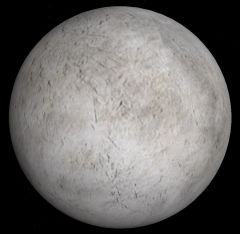Difference between revisions of "136199 Eris"
(Arvil moved page User:Arvil/Sandbox02 to Fenrir: Move to article page.) Tag: New redirect |
m (Arvil moved page User:Arvil/Sandbox02 to 136199 Eris: Move to article page.) |
||
| (One intermediate revision by the same user not shown) | |||
| Line 1: | Line 1: | ||
| − | + | {| cellpadding="2" cellspacing="0" style="margin:25px 0 0 10px; border:3px solid lightsteelblue;width:250px; font-size:90%; font-family:'Arial','Helvetica'; float: right; clear: right;"Pluto in Orbiter" | |
| + | !bgcolor="lightsteelblue" colspan="2" align="center" |136199 Eris | ||
| + | |- | ||
| + | |colspan="2" align="center"|[[Image:136199Eris-ErisAndDysnomia-Orbiter2006P1.jpg|Eris|240px]] | ||
| + | |- | ||
| + | |colspan="2" align="center"|'''136199 Eris from ''ErisAndDysnomia.zip'' in Orbiter 2006P1''' | ||
| + | |- | ||
| + | !bgcolor="lightsteelblue" colspan="2"|Designation | ||
| + | |- | ||
| + | |Name||align="right"|136199 Eris | ||
| + | |- | ||
| + | |width="30%"|Reference body||align="right" width="30%"|Sun | ||
| + | |- | ||
| + | |width="30%"|Number of satellites||align="right" width="30%"|5 | ||
| + | |- | ||
| + | !bgcolor="lightsteelblue" colspan="2"|Planetary mean orbits | ||
| + | |- | ||
| + | |width="30%"|Epoch||align="right" width="50%"|2005.71598173516 | ||
| + | |- | ||
| + | |width="30%"|Semimajor axis (a)||align="right" width="50%"|10148508382333.42 m | ||
| + | |- | ||
| + | |width="30%"|Eccentricity (e)||align="right" width="30%"|0.4374901 | ||
| + | |- | ||
| + | |width="30%"|Inclination (i)||align="right" width="30%"|44.07902° <br> (0.769324030052431 radian) | ||
| + | |- | ||
| + | |width="30%"|Longitude of the ascending node (LAN, ☊)||align="right" width="30%"|35.9276° <br> (0.627054912339515 radian) | ||
| + | |- | ||
| + | |width="30%"|Longitude of periapsis (ϖ)||align="right" width="30%"|187.50013° <br> (3.27249461641740 radian) | ||
| + | |- | ||
| + | |width="30%"|Mean longitude (L)||align="right" width="30%"|25.98231° <br> (0.453476856773848 radian) | ||
| + | |- | ||
| + | !bgcolor="lightsteelblue" colspan="2"|Selected physical parameters | ||
| + | |- | ||
| + | |width="30%"|Mean radius||align="right" width="30%"|1356407.61 m | ||
| + | |- | ||
| + | |width="30%"|Mass||align="right" width="30%"|4.28625×10<sup>22</sup> kg | ||
| + | |- | ||
| + | |width="30%"|Sidereal rotation period||align="right" width="30%"|138240 sec (38.4 hours) | ||
| + | |- | ||
| + | |width="30%"|SidRotOffset||align="right" width="30%"|0 | ||
| + | |- | ||
| + | |width="30%"|Obliquity||align="right" width="30%"|30.68° (0.535467015 radian) | ||
| + | |- | ||
| + | |width="30%"|LAN||align="right" width="30%"|0 | ||
| + | |- | ||
| + | |width="30%"|Note||align="right" width="30%"|*Elements given are from 136199 Eris.cfg (ErisAndDysnomia.zip) | ||
| + | |} | ||
| + | |||
| + | '''136199 Eris (2003 UB<sub>313</sub>)''' is the second largest after [[134340 Pluto]] and the most massive [[Dwarf planet]] in the solar system, and is a trans-Neptunian object in the scattered disc. Eris was discovered by [[w:Michael E. Brown|Mike Brown]] at the [[w:Palomar Observatory|Palomar Observatory]] in January 2005. There is a pre-discovery image from October 2003, but, it was not recognized due to its slow orbital motion. | ||
| + | |||
| + | Eris is named for [[w:Eris (mythology)|Eris]] the Greek goddess of strife and discord. | ||
| + | |||
| + | Eris has one satellite, [[Dysnomia]]. | ||
| + | |||
| + | == Eris in Orbiter == | ||
| + | Eris was first introduced with the release of ''ErisAndDysnomia.zip'' in May 2008. | ||
| + | |||
| + | {| class="wikitable" style="text-align: center" | ||
| + | |colspan="8"|<center>'''Orbiter versions and add-ons which include Pluto'''</center> | ||
| + | |- | ||
| + | !Add-on!!Source!!Version!!Author!!Type!!Release Date!!Compatibility!!Wiki article | ||
| + | |- | ||
| + | |[https://www.orbiter-forum.com/resources/eris-and-dysnomia.521/ Eris and Dysnomia]||O-F Resources||2008-05-10||Piper||Scenery||11 May 2008|||| | ||
| + | |} | ||
| + | |||
| + | == Gallery == | ||
| + | <gallery widths="100" heights="100"> | ||
| + | 136199Eris-ErisAndDysnomia-Orbiter2006P1.jpg|136199 Eris from ''ErisAndDysnomia.zip'' in Orbiter 2006P1</center> | ||
| + | Hubble Dysnomia orbit overlay.jpg|<center>Image of Eris and Dysnomia by [[w:Hubble Space Telescope|Hubble]] in August 2006<br>from Wikimedia Commons</center> | ||
| + | </gallery> | ||
| + | |||
| + | ==References== | ||
| + | |||
| + | [[Category:Articles|Eris]] | ||
| + | [[Category:Celestial bodies|Eris]] | ||
| + | [[Category:Solar System|Eris]] | ||
| + | [[Category:Dwarf planets|Eris]] | ||
| + | [[Category:Trans-Neptunian objects|Eris]] | ||
| + | |||
| + | {{SolarSystem}} | ||
Latest revision as of 03:20, 23 October 2024
136199 Eris (2003 UB313) is the second largest after 134340 Pluto and the most massive Dwarf planet in the solar system, and is a trans-Neptunian object in the scattered disc. Eris was discovered by Mike Brown at the Palomar Observatory in January 2005. There is a pre-discovery image from October 2003, but, it was not recognized due to its slow orbital motion.
Eris is named for Eris the Greek goddess of strife and discord.
Eris has one satellite, Dysnomia.
Eris in Orbiter[edit]
Eris was first introduced with the release of ErisAndDysnomia.zip in May 2008.
| Add-on | Source | Version | Author | Type | Release Date | Compatibility | Wiki article |
|---|---|---|---|---|---|---|---|
| Eris and Dysnomia | O-F Resources | 2008-05-10 | Piper | Scenery | 11 May 2008 | ||
Gallery[edit]
Image of Eris and Dysnomia by Hubble in August 2006
from Wikimedia Commons
References[edit]
| edit The Solar System | |
|---|---|
| Central star |
Sun (Sol) |
| Planets |
Mercury - Venus - Earth - Mars - Jupiter - Saturn - Uranus - Neptune |
| Natural satellites |
Moon - Phobos - Deimos - Io - Europa - Ganymede - Titan - more... |
| Add-ons |
Planets - Dwarf Planets - Small objects - Natural satellites - Alternative star systems |


